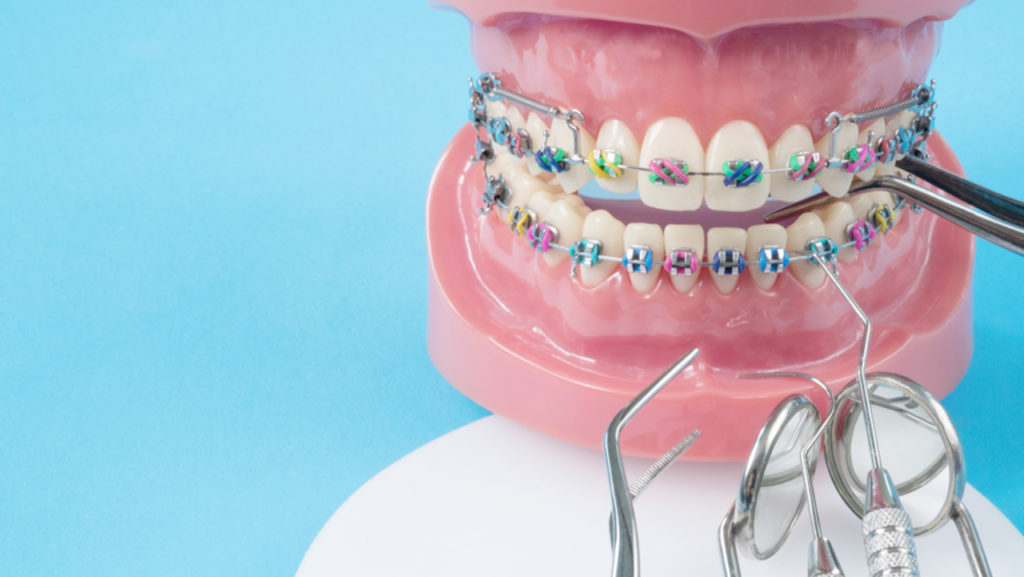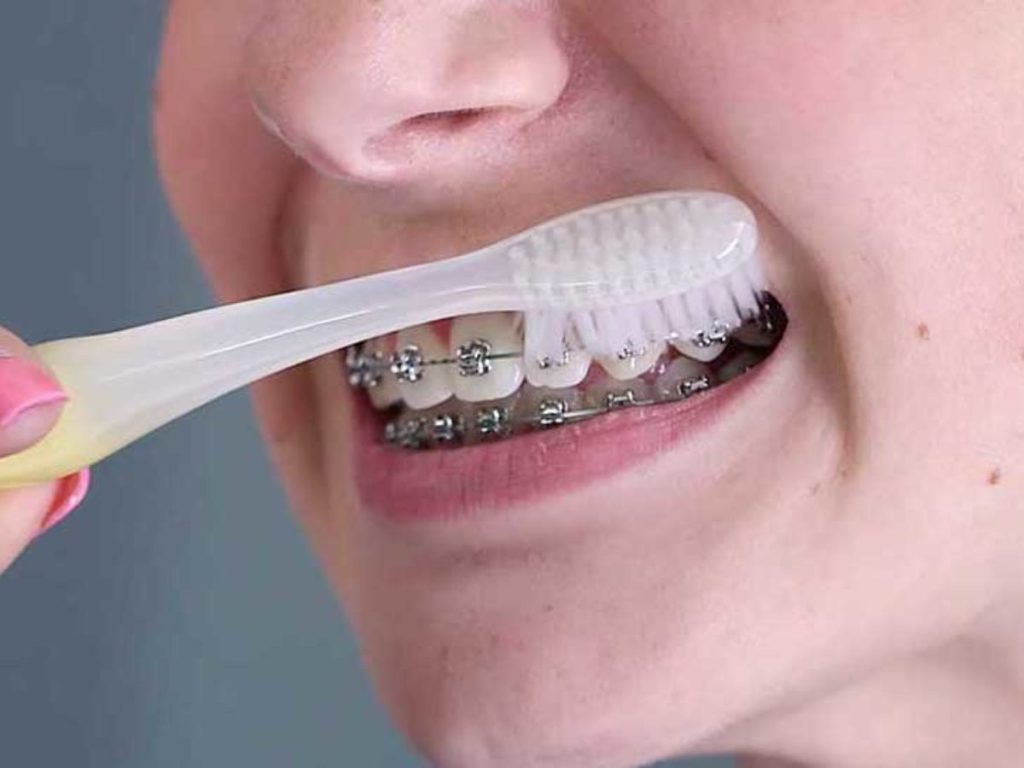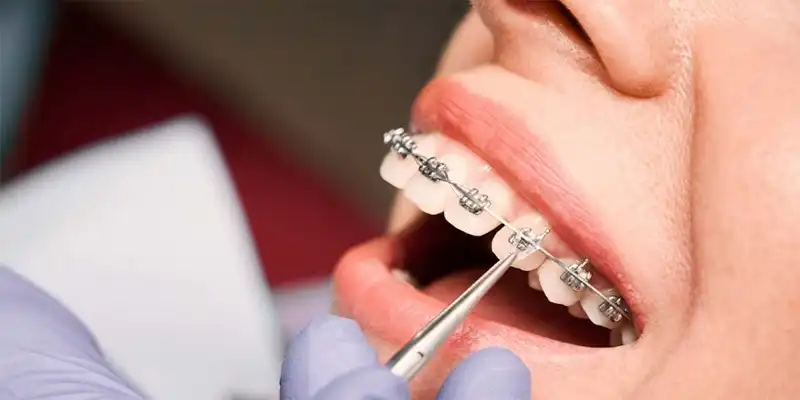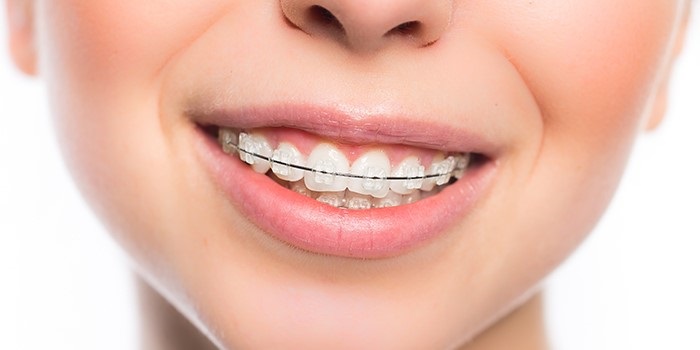Orthodontic braces are a transformative step toward achieving a healthier, more confident smile. Yet, maintaining them requires diligence and proper care to ensure the best outcomes. This detailed guide not only walks you through daily routines, dietary adjustments, and post-treatment habits but also incorporates enhanced features like a quick “Golden Rules” summary, a comparison chart for different types of braces, and practical resources to simplify your orthodontic journey.
Why Braces Care is Essential

Braces, while highly effective, create new surfaces where food particles and plaque can accumulate, increasing the risk of cavities, gum irritation, or even treatment delays. Proper care ensures:
- Consistent progress toward your ideal smile.
- Prevention of oral health problems during treatment.
- Optimal results once your braces are removed.
For detailed guidance on maintaining oral health, visit our Essential Guide to a Healthy Diet for Your Teeth.
Daily Cleaning Routine for Braces

Maintaining a consistent cleaning routine is vital for preventing plaque buildup and keeping your braces in good condition.
1. Brush After Every Meal
- How to Brush: Use a soft-bristled or orthodontic toothbrush angled at 45 degrees to clean along the gum line and around brackets.
- Duration: Spend at least two minutes brushing, ensuring all surfaces are thoroughly cleaned.
- Pro Tip: Consider an electric toothbrush for improved results. Read our Guide to Choosing the Perfect Toothbrush.
2. Use Fluoride Toothpaste
- Fluoride strengthens enamel and prevents cavities. For added protection, consult your orthodontist about prescription-strength toothpaste or gel. Explore more tips in our Guide to Choosing the Right Toothpaste for Every Smile.
3. Floss Daily
Flossing is essential for removing trapped food particles and plaque. Tools like floss threaders, orthodontic floss, or a water flosser can simplify the process.
4. Rinse with Mouthwash
- Use a fluoride or antimicrobial rinse to kill bacteria and protect enamel. If you experience sensitivity, check out our Guide to Understanding Tooth Sensitivity.
5. Use Interdental Brushes
- These brushes are perfect for cleaning hard-to-reach areas around brackets and wires.
Role of Regular Orthodontic Checkups

In addition to daily care, regular orthodontic visits are crucial. These checkups:
- Allow your orthodontist to adjust brackets and wires to keep your treatment on track.
- Help detect and address issues like gum irritation or cavities early on.
- Offer personalized advice for maintaining oral hygiene with braces.
Frequency: Schedule checkups every 4–6 weeks unless instructed otherwise. Read about the importance of routine visits in our Guide to Why Regular Dental Checkups Matter.
Table: Comparison of Different Braces Types
| Type | Advantages | Disadvantages | Care Tips |
|---|---|---|---|
| Metal Braces | Durable, cost-effective | Noticeable | Use interdental brushes for thorough cleaning. |
| Ceramic Braces | Blend with teeth, discreet appearance | Prone to staining, more fragile | Avoid pigmented foods like coffee, tea, and tomato sauce. |
| Lingual Braces | Hidden behind teeth | Difficult to clean, may cause tongue discomfort | Use small toothbrushes or electric brushes to clean behind teeth effectively. |
| Clear Aligners | Removable, invisible | Requires discipline to wear consistently | Rinse aligners daily and remove them before meals to avoid staining. |
For more insights into these options, check out our Comprehensive Guide to Orthodontic Treatments.
Diet and Nutrition: Supporting Braces Success

Your diet plays a critical role in maintaining oral health during treatment. Follow these recommendations:
Foods to Eat
- Soft foods like mashed potatoes, yogurt, scrambled eggs, and smoothies.
Foods to Avoid
- Hard or sticky foods like caramel, popcorn, and bagels, which can damage wires or brackets. Learn more in our Preventing Tooth Decay Guide.
The Probiotic Advantage
- Incorporate probiotic-rich options like kefir and yogurt for improved gum health and a balanced oral microbiome.
Addressing Common Braces Challenges
1. Pain After Adjustments
- Use over-the-counter pain relief, warm saltwater rinses, or cold foods like ice cream or smoothies to ease soreness. Check our Tooth Pain Relief Guide for more tips.
2. Emergencies
- For loose brackets or poking wires, apply orthodontic wax and contact your orthodontist promptly. Explore our Guide to Handling Dental Emergencies.
Post-Treatment Care: Retainers and Lifestyle Adjustments
After braces are removed, retainers are essential for maintaining the results. Proper care extends their life and ensures effectiveness.
Retainer Types
- Fixed Retainers: Bonded behind teeth for continuous support.
- Removable Retainers: Easily cleaned but must be worn consistently.
For cleaning tips and maintenance advice, consult our Guide to Retainer Care and Cleaning.
5 Golden Rules for Braces Care
- Brush after every meal for at least two minutes.
- Floss daily to remove debris trapped under wires.
- Avoid hard, sticky, and chewy foods.
- Use orthodontic wax to manage irritation from wires or brackets.
- Visit your orthodontist every 4–6 weeks for regular adjustments.
FAQ: Common Questions About Braces
Q: How often should I visit my orthodontist?
- Every 4–6 weeks or as advised.
Q: Can I whiten my teeth with braces?
- It’s best to wait until your braces are removed for even results.
Q: What should I do if my braces break?
- Cover sharp edges with orthodontic wax and schedule a repair appointment.
Conclusion: Building a Beautiful Smile
Caring for braces requires dedication, but the payoff—a perfectly aligned and healthy smile—makes it worthwhile. By following these guidelines, scheduling regular checkups, and making the right dietary choices, you’ll ensure treatment success and long-lasting results.
Next Steps: Ready to enhance your braces care? Visit NuSmile Dental Centers for personalized advice and professional support. Together, we’ll guide you toward a smile you’ll love for life!
